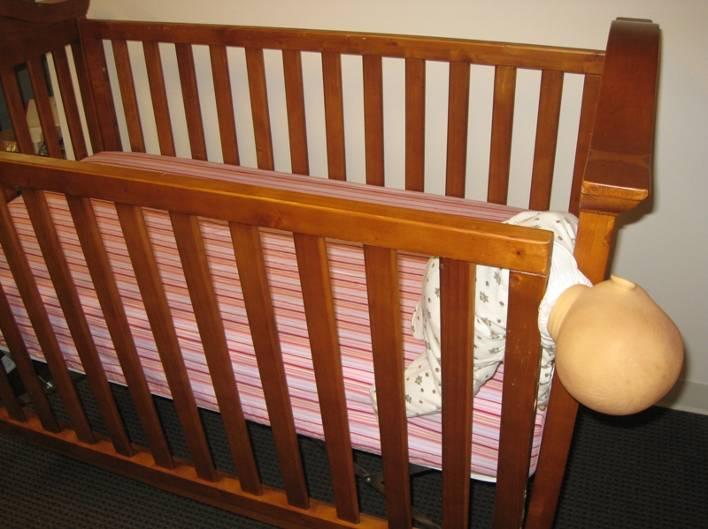
When the Crib Moves but Safety Stays
When the Frame Helps Instead of Frightens
One of the first things new parents hear is: avoid cribs with moving parts. And yes, once upon a time, that warning made perfect sense. Older models with drop-side rails had some real issues — poorly designed mechanisms, lack of testing, and, sadly, injuries. But as with many parenting fears, the truth isn’t black and white. Some movement in crib design can actually be helpful — and perfectly safe.
Take adjustable mattress heights. These are technically moving components. But they allow the crib to grow with your baby, keeping things ergonomic for you in the newborn stage and safe once your little one learns to stand. Not all motion is dangerous — some is just thoughtful design.
Safety isn’t about avoiding movement altogether. It’s about understanding what moves, how it moves, and whether it’s built to last through actual parenting life.
I’ve met families who hesitated to buy a convertible crib because of the mechanisms involved. But by passing on a high-quality adjustable option, they ended up replacing their crib after just a few months. The stress of too much bending, lifting, and adjusting on the fly — it all adds up. A crib that adapts to your family’s rhythm is often the safer choice in the long run.
Not All Movement Means Risk
The fear around movement in cribs usually comes from a good place — we all want our babies to sleep in the safest environment possible. But it’s worth slowing down and asking: what kind of movement are we talking about?
Modern cribs with moving parts usually include:
- Adjustable mattress bases
- Convertible side panels (for toddler bed transition)
- Rocking or gliding bases (mostly in co-sleepers)
Each of these has its own purpose, and when built with safety in mind, they’re not inherently risky. The problem comes in when hardware is flimsy, when mechanisms loosen easily, or when shortcuts are taken in production. So the focus should shift from “avoid moving parts” to “check how those parts are made and tested.”
Movement in a crib becomes unsafe only when it’s combined with poor engineering, cheap materials, or lack of proper locking systems.
Olga’s story: When our son hit four months, I loved being able to lower the mattress level gradually. It meant fewer backaches for me and no temptation for him to pull up and tumble out. That single moving part brought a level of flexibility that made us feel more in control, not less.
The Real Checklist for Peace of Mind
Instead of panicking over every hinge or screw, there are a few practical things I recommend checking when considering a crib with moving parts. Think like a tired parent — not a paranoid one.
- Does the mechanism feel secure when locked?
- Is it certified by a recognizable safety standard (like JPMA, ASTM, or CPSC)?
- Do screws and fittings stay tight over time?
- Is there a clear user manual (yes, you will need it)?
Some of the most impressive crib brands actually over-engineer their moving components. You can feel the difference — heavy-duty metal frames, smooth transitions, no jerky movements or plastic locks that bend after a few uses. That kind of detail gives me confidence as both a specialist and a mom who’s been through sleepless nights.
Most of the danger lies not in the design itself, but in misuse, assembly shortcuts, or poor maintenance.
I also always tell parents: be honest about your lifestyle. If you know you won’t re-tighten screws regularly or double-check moving joints, pick the simplest design possible. But don’t throw out convenience just because it moves. Just learn what makes that movement reliable.
Our Family Took a Chance on a Convertible Crib
I’ll be honest: when we were choosing a crib, the convertible models made me nervous. The idea that the same bed would carry our son from birth through toddlerhood felt too good to be true. Would the pieces hold up? Would the mechanisms loosen? Would it feel safe over time?
We took the leap anyway — and five years later, that crib is now his toddler bed. We’ve adjusted it multiple times, taken it apart during a move, even cleaned jam out of the lock once (thanks to his snack phase). But it still feels sturdy. Safe. Worth it.
Sometimes a crib with a few extra features can reduce stress — and less stress means safer sleep for everyone.
I’ve recommended the same model to several families I work with. The key? Choose well, read the manual (seriously), and make sure you’re comfortable with how it works before your baby ever sleeps in it. Once you’re familiar, you’ll use the features with confidence — not fear.
When Parents Sleep Well Too
We focus so much on baby safety that we often forget: parental stress is also a safety issue. If a crib feels like a puzzle every time you use it, you’re more likely to rush, make mistakes, or give up on using it properly.
One family I worked with had a gorgeous vintage crib with no adjustable parts. But lifting their baby in and out after a C-section recovery was agony. They ended up co-sleeping by accident — and it wasn’t their plan. A simple, modern crib with good engineering would’ve made all the difference.
A safe crib isn’t just a product. It’s part of your sleep routine — and routines only work when they’re usable, night after night.
So don’t be afraid of mechanisms. Be afraid of shortcuts. Choose a crib that matches your energy, your home, and your rhythm. The right one will move with you, not against you.


